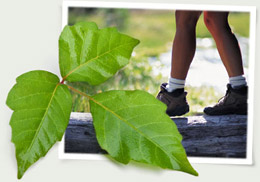
Protecting yourself from poison oak, poison ivy and poison sumac
Posted in General Health & Wellness on September 24, 2012. Last modified on March 28, 2019. Read disclaimer.
Poison ivy, poison oak and poison sumac all share a single, miserable compound that makes them so notorious -- urushiol oil. When absorbed by the skin, just a miniscule amount of this sticky sap can create an itching and oozing rash in 80%-90% of us. How toxic is it? Just enough urushiol oil to cover the head of a pin would cause an allergic reaction in 500 people. 1/4 of an ounce is enough to effect everyone on earth!
+ Free Shipping & Returns on Eligible Items.
(*Amazon's Top 100 list updated hourly.)
To some of us who are highly reactive, it seems like just getting near these plants can make us break out. The fact is that the urushiol oil is locked in the leaves, stems, roots and berries so the plant must be bruised in order for the toxic oil to be released. The bad news is that they bruise, break or tear easily, especially in spring and early summer when the leaves are most tender. In addition to brushing up against the poisonous plants directly, there are many ways we be exposed to urushiol oil indirectly:
- from garden tools, pets, clothes or anything else that had a brush with the oil within the past year (perhaps several years) and was not cleaned thoroughly. And, sensitive people can break out from urushiol specimens that are hundreds of years old.
- if you handled firewood that may have had poison ivy attached to it. (Urushiol oil remains present in dead plant for up to five years.)
- if you touch your face, private parts or other body areas and spread the oil within the first 30 minutes or so of exposure, before it's been absorbed into the skin.
- even more dangerous can be oil that's dispersed in the air by a weed eater or lawnmower or the smoke from someone burning poison ivy, oak or sumac far upwind.
Think you're one of the lucky ones who are immune? Don't push your luck. We all react differently when exposed to urushiol oil. Some of us who showed little response as children will develop an allergy to it as adults. Others may have less of a reaction as we age. For the majority of us, however, our allergic response becomes more vigorous with repeated exposure. And the more of it we come in contact, the worse we break out. (The average exposure gets 100x more urushiol on our skin than is needed for a rash to break out.)
Are even American Indians allergic to urushiol oil?
Yes. In the past, Native Americans were probably just expert at recognizing and avoiding poison ivy, oak and sumac.
Are animals allergic to urushiol oil?
Animals rarely have an allergic reaction to poison ivy, oak or sumac. The berries of the plants are an important food source for birds and the leaves are a favorite with deer, mice and insects. Since household cats and dogs, seldom have an allergic response, second hand exposure (from pets to humans) of urushiol oil is very common. If there is a chance that your pet has been exposed, put on dishwashing gloves and shampoo him or her before petting or handling.
Is there any way to develop immunity to poison oak, poison ivy or poison sumac?
Probably not. Though some people feel they've developed urushiol oil immunity through a variety of unconventional ways, like eating tiny amounts of the leaves early each spring or drinking milk from goats that graze on these poisonous plants, medical experts seem to agree that there is no safe, reliable way to desensitize ourselves.
How to protect yourself if you're hiking or working in the yard and may be exposed:
- recognize what poison ivy, oak and sumac look like. (The saying, leaves of three, let it be is a good, is a general rule regarding poison oak and ivy but for a quick description see Outsmarting Poison Ivy and Other Plants. The most detailed description we've found is in the free 12-page booklet, Positively Identify Poison Ivy and Poison Oak. Poison sumac has 7-13 leaves and looks nothing like poison ivy or oak.
- stay on trails to minimize your risk of exposure.
- wear long sleeve shirt, pants (tucked into boots or socks) and, if appropriate, gloves.
- if you know that you will likely be exposed to urushiol oil, apply blocking cream (such as Ivy Block) to exposed area, 30 minutes beforehand, just like you would apply sunscreen lotion.
- afterwards, wash clothes and shoes in hot water and soap. If shoes cannot be washed, they should be wiped clean with rubbing alcohol.
- shampoo pets if they may have been exposed.
- wipe tools clean with rubbing alcohol or wash with soapy water.
- we found this tip at the Ohio State University Agriculture Safety Program web site and the Poison Ivy Information Center but the national park service says not to do it: As soon as possible after you have been exposed, wipe areas of the body that may have been exposed with rubbing alcohol and then wash the exposed area. Do not go out and possibly re expose yourself after following this step, since rubbing alcohol removes natural oils in your skin, thus decreasing your natural defenses.
- shower in cool water with a degreasing soap (we use dawn dish detergent), as soon as possible. (Warm water can draw the urushiol oil deeper into your skin. avoid taking a bath until you feel the oil has been removed from your body -- showers will minimize the chance of the oil spreading.
How long before possible rash will appear after exposure? How long before it has run its course?
As soon as a few hours or as long as two days. If someone is highly sensitive, however, or they've been exposed to a lot of the oil, medical treatment may be needed. Swelling could be so severe that one's breathing could stop.
It is possible for some body parts to respond later than others because:
- thin-skin areas are more sensitive than areas with hair or where skin is thicker.
- they may have been exposed to differing amounts of urushiol.
- exposure may be spread out over time by touching pets, sports equipment, tools, etc. that are carrying the oil.
What you can do if the telltale, red, bumpy rash of poison ivy, oak or sumac appears:
- Wait it out. In most cases, the rash and oozing will be over in 1-3 weeks with the most discomfort occurring from days 4-7.
- Manage the discomfort with over-the-counter hydrocortisone cream, calamine lotion, oral antihistamine like Benadryl or Zyrtec or washing with a post-exposure soap like Zanfel that can draw absorbed urushiol oil from the skin.
- See a doctor if you a fever develops or areas around the eyes or mouth are affected.

 High blood pressure risk factors
High blood pressure risk factors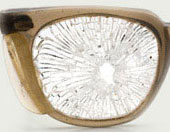 Protecting your eyes and eyesight
Protecting your eyes and eyesight Living safely with house pets
Living safely with house pets Natural body detox through exercise
Natural body detox through exercise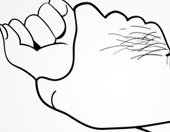 Domestic violence assistance
Domestic violence assistance Important role of grandparents
Important role of grandparents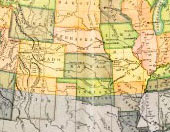 Concerns and risks of Vitamin D deficiency
Concerns and risks of Vitamin D deficiency What is carpal tunnel syndrome?
What is carpal tunnel syndrome?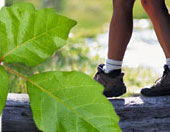 Poison oak, ivy and sumac rash prevention
Poison oak, ivy and sumac rash prevention Safety tips for preventing food poisoning
Safety tips for preventing food poisoning